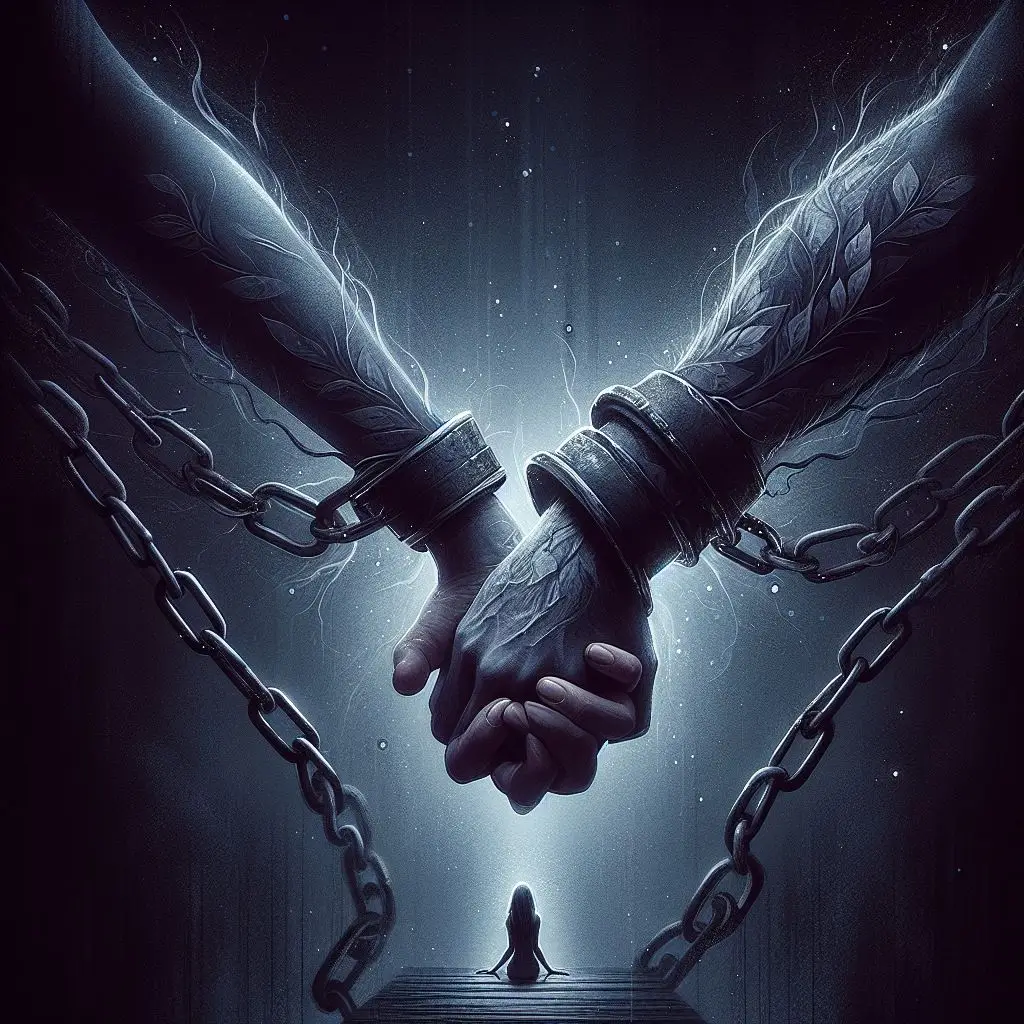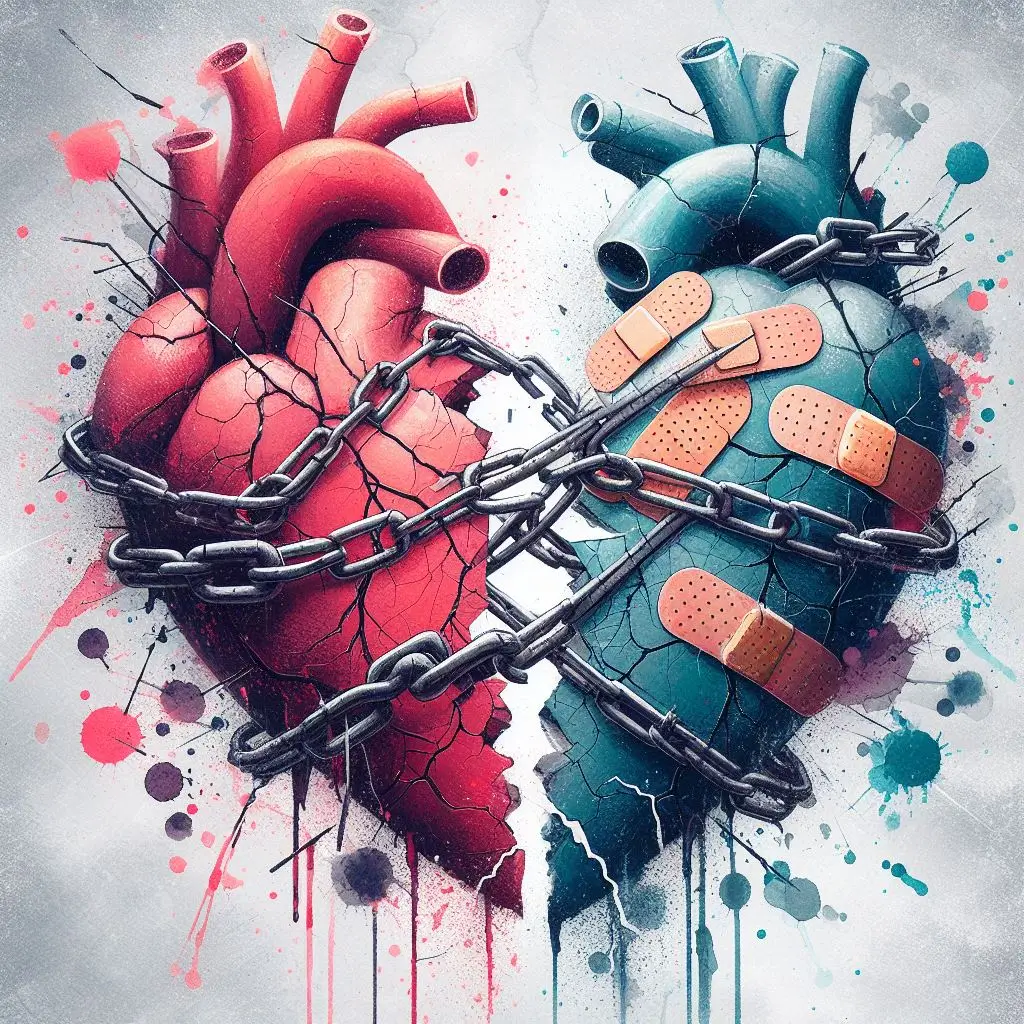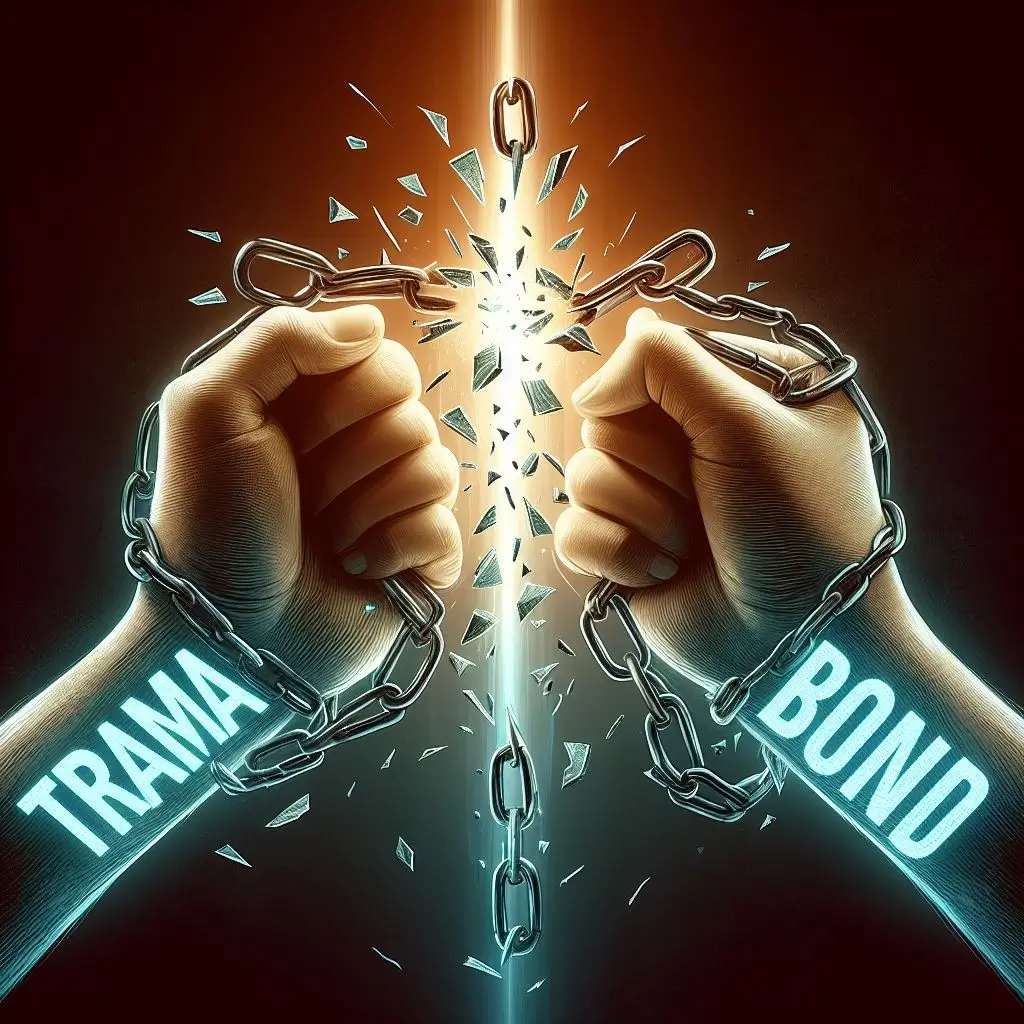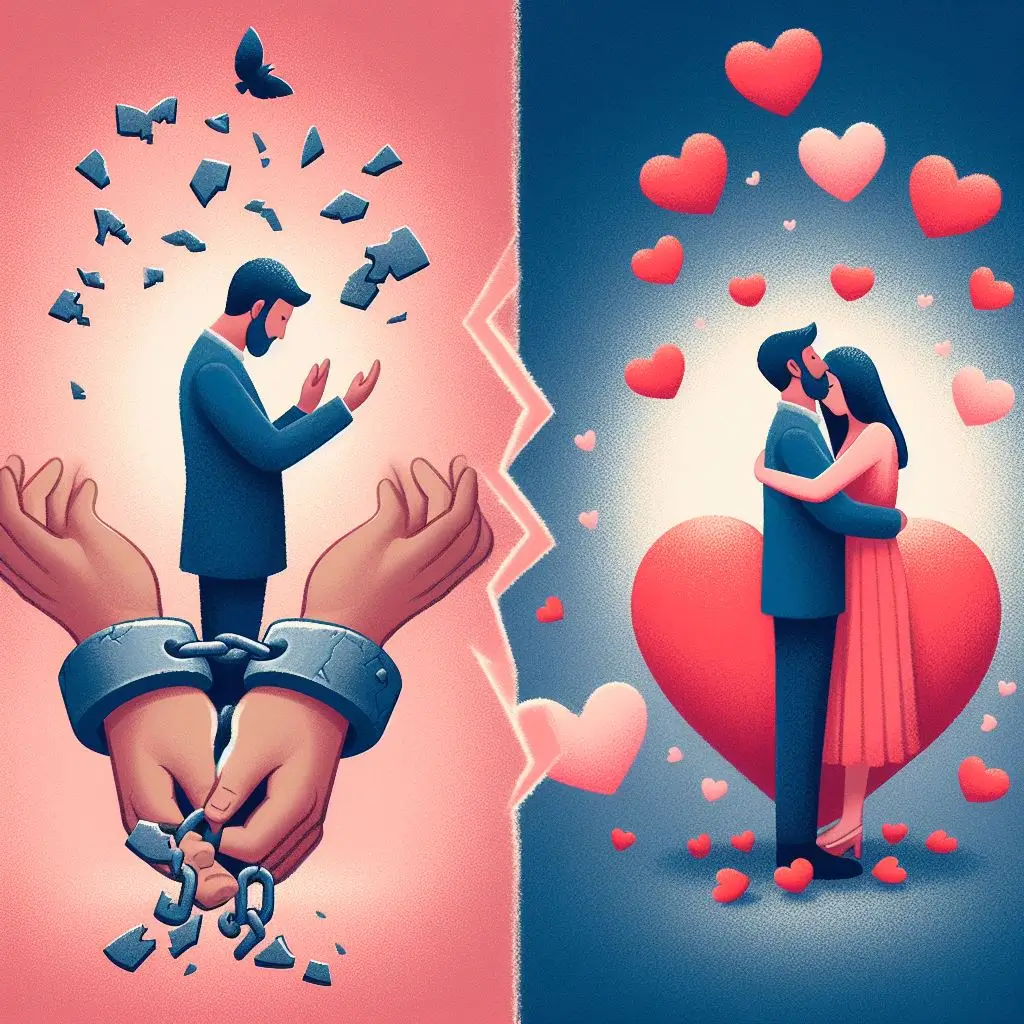Sometimes, people get stuck in relationships filled with pain and hurt, instead of love. These trauma bonds act like love, but really keep people trapped in unhealthy cycles. First, you must spot the difference between a trauma bond and real love.
We’ll look closely at the qualities of trauma bonds and healthy love. You’ll learn warning signs of toxic bonds, power struggles, and boundary issues in relationships. Plus, we’ll share tips for breaking free from harmful cycles, healing from trauma bonds, and building positive emotional connections.
Let’s explore the complex world of toxic relationships. By understanding trauma bonds, you can rediscover trust, fulfillment, and authentic connections.
What Is a Trauma Bond?
A trauma bond is a strong emotional tie between a victim and abuser. People develop this intense bond due to ongoing abuse or trauma. The bond traps victims in the toxic relationship, making escape difficult.
These bonds arise when someone experiences repeated trauma or abuse. The extreme emotions create an unhealthy dependence. The abuse cycle (tension, incident, reconciliation, calm) reinforces the distorted bond.
A trauma bond has an unfair balance of power. It involves manipulation and feelings of fear, loyalty, or love.
Fahim chughtai
Victims may desire the short kind moments after abuse. They get attention and affection then. This cycle makes them dependent. They might not see how toxic the relationship is.
Breaking free from a trauma bond is crucial. Get help from experts, friends, and family. They can give you guidance and resources. Therapy, safety planning, and setting clear boundaries are essential. These steps aid healing and allow a healthy, satisfying life. Remember, it takes courage to leave a trauma bond. Doing so leads to self-discovery and growth.
What is Love?
Love is complex. It plays an important role in relationships. Love is deep affection and connection between people. It has key parts that create a healthy, fulfilling relationship.
- Love means a strong emotional tie between two people. It’s more than physical attraction. It includes deep understanding, empathy, and caring about each other’s emotions.
- Love needs mutual respect and appreciation. You treat each other kindly and honor boundaries. You value each other’s views and freedom.
- Trust and being honest are key to love. You must open up, believe in your partner’s loyalty, and feel emotionally safe.
- Support and encouragement are loving acts. Helping each other through good and bad times, pushing personal growth, and cheering goals is caring.
- Good communication nurtures love. Actively listening, openly sharing thoughts and feelings, and resolving conflicts respectfully are vital.
Love needs effort, understanding, and nurturing. Prioritizing emotional health, open dialogue, and a supportive environment sustains relationships.
Characteristics of a Trauma Bond Relationship

A trauma bond is an unhealthy emotional tie between two people who experienced trauma together. These bonds involve power imbalances, intense attachment, and abuse cycles.
Power Imbalances
In trauma bonds, one person dominates the other, creating control and dependency. The power dynamic is uneven.
Deep Emotional Connection
One key trait of a trauma bond is the profound emotional tie between people involved. This connection stems from their shared traumatic experience and belief that their partner solely understands and supports them. Despite the harmful dynamics, individuals feel intensely bonded and loyal to their partner.
The Recurring Pattern
The cycle of abuse frequently manifests in trauma bonds, with four stages. Tensions escalate, creating a sense of unease. Then the abusive incident occurs. Reconciliation follows, with apologies and promises of change, leading to a temporary calm period before the cycle repeats.
Recognizing these signs is vital for identifying if you’re experiencing a trauma bond relationship. Seeking help from professionals and loved ones is crucial to break free from the cycle of abuse and start healing toward healthier relationships. Remember, you’re not alone — support exists to guide your journey.
The Cycle of abuse
This recurring cycle comprises four distinct phases: tension, incident, reconciliation, and calm.
This is how it works: First, there is tension building up. Small fights become bigger. You feel anxious and uneasy. Then, something bad happens — verbal abuse, emotional harm, or physical violence. The tension is released, but just for now. After that, the abuser feels sorry and tries to make up. They say sorry, promise change, and show affection. Things feel calm for a bit. But this peaceful time is only temporary. The cycle will repeat. The calm does not mean it’s a good relationship.
The makeup stage can feel like love, but it’s not. Those peaceful moments don’t last. The cycle of abuse continues.
How Are Trauma Bonds and Love Different?
Relationships involve complex emotions. Trauma bonds and love differ greatly, though they share emotional intensity. It’s crucial to understand their distinctions.
Emotional Impact and Nature
Trauma bonds arise from abuse, exploitation and manipulation. They form through extreme highs and lows, creating confusion that bonds victims to abusers. Love fosters security, nurturing and trust in healthy relationships based on mutual respect and connection.
Power Dynamics
Trauma bonds feature control imbalances, with one partner dominating and manipulating the other. This leads to coercion. Love embraces equality, open communication and shared decisions. Partners feel heard, valued and respected.
Boundaries
Trauma bonds blur boundaries, making it hard to define acceptable behavior. Victims endure mistreatment due to attachment fears. Healthy love establishes clear, respected boundaries. Each partner recognizes the other’s needs, ensuring a safe, nurturing environment.
Understanding these contrasts empowers persons to discern whether they’re in traumatic attachment or caring relation. It’s essential getting help, breaking vicious cycles, permitting healing, finding love, joy.
How Trauma Bonds Impact Someone’s Life
Trauma bonds profoundly impact one’s life, affecting emotional wellbeing, self-worth, ability forming healthy relationships. Grasping effects is key recognizing, breaking toxic patterns. Here’s how trauma bonds influence someone:
1. Emotional Wellness
Trauma bonds breed intense attachment, making detaching from abusers tough. Emotional highs, lows cause confusion, anxiety, depression. People constantly seek abusers’ validation, approval, greatly harming mental health.
2. Self-Worth
Being trauma-bonded erodes self-worth, identity. Constant manipulation, gaslighting, degradation undermine confidence, make victims doubt abilities, judgment. They may believe deserving abuse, feel powerless changing circumstances.
3. Forming Healthy Relationships
Trauma bonds impair forming future healthy relationships. Power dynamics, emotional intensity distort perceptions of normal, loving bonds. This causes trust issues, boundary struggles, missing red flags in new relationships.
Key Takeaway: Remember, healing from a trauma bond is a journey, and it is essential to be patient and kind to oneself throughout the recovery process. With time, understanding, and support, individuals can regain their emotional well-being, reclaim their self-worth, and establish healthy, loving relationships.
How Love Impacts Someone’s Life
Love is a powerful emotion that has a profound impact on someone’s life. When experienced in a healthy and nurturing relationship, love can bring immense joy, companionship, and emotional fulfillment. Here are some ways in which love can positively influence one’s life:
1. Emotional Well-being
Love contributes to a person’s emotional well-being by providing a sense of security, happiness, and support. When individuals feel loved and valued by their partner, it boosts their self-esteem and creates a positive outlook on life. Having a loving partner can also serve as a source of comfort during challenging times, helping individuals navigate through difficulties with the knowledge that they have someone by their side.
2. Stronger Relationships
Love fosters stronger and healthier relationships. Couples who share a deep emotional bond are more likely to communicate effectively, resolve conflicts in a constructive manner, and build a strong foundation of trust and intimacy. Love creates a sense of unity and partnership, allowing individuals to grow together and support each other’s personal growth.
3. Increased Resilience
When troubles strike, having a caring companion can fortify your resolve. Love endows one with the stamina to weather adversity’s storms, leaning on one’s partner for tender succor. This bolstered resilience empowers individuals to surmount daunting obstacles.
4. Improved Physical Health
Affectionate bonds yield salubrious effects. Amorous unions can temper stress levels, lower blood pressure, and enhance cardiovascular wellness. Cherished companions motivate individuals to embrace healthier lifestyles — exercising regularly and maintaining balanced diets.
5. Life Satisfaction
Profound love instills a profound sense of fulfillment. Feeling cherished breeds happiness, enriching existence with purpose. Love casts a radiant glow over life’s every facet, inspiring optimism for what lies ahead.
Yet love must spring from respect, empathy, and mutual support. Wholesome love nurtures personal growth, inspiring individuals to actualize their finest selves.
How are Trauma Bonds and Love Different? Comparsion

Although trauma bonds and love both forge intense emotional connections, their underlying dynamics differ starkly, as do their effects. Comprehending these distinctions proves pivotal for discerning healthy relationships from toxic entanglements. Let us explore the unique qualities that demarcate trauma bonds from genuine love.
Trauma bonds have a powerful emotional force, born from shared trauma or mistreatment. This intense connection forms as a means of survival, creating deep bonds with abusers. In contrast, genuine love nurtures mutual respect, trust, and care through healthy emotional ties.
Trauma bonds breed power imbalances where one person controls and manipulates the other, trapping victims in cycles of abuse and dependency. Love, however, stands on equal ground — partners contribute to growth and well-being together.
A cycle of abuse fuels trauma bonds: tension builds before an incident, followed by reconciliation and calm periods. Abusers alternate between aggression and kindness, confusing victims and strengthening bonds. Love offers consistent care, open communication, and steadfast support.
What does trauma bonding look like in a relationship?
Trauma bonding breeds complex, insidious dynamics within relationships. Understanding its visible manifestations is key to recognizing and addressing unhealthy partnership patterns. Watch for these trauma bond indicators:
A trauma bond brings overwhelming feelings
People develop intense attachment to abusive partners. The relationship feels all-consuming, making detachment challenging despite toxicity. This bond stems from irregular affection reinforcement and abuser’s manipulation tactics.
Abuse cycles followed by affection phases
Trauma bonding has repeated abuse and affection cycles. Abusers alternate intense mistreatment periods with remorse and affection “honeymoon” phases. This confusion heightens victim dependency, convincing them affection represents true love.
Isolation from loved ones enforced
Abusers isolate victims from friends, family, community support systems. They manipulate reality perceptions, causing victims to doubt loved ones’ intentions and loyalty. Isolation maintains control, restricting access to validation.
Justifying abuser’s actions becomes habit
Trauma bonded victims justify and rationalize partner’s abuse. They internalize blame, believing mistreatment is deserved or provoked. This distorted thinking contributes to ongoing abuse cycles under the pretext of changing abusers through love.
The profound fear of being deserted characterizes trauma bonds
Despite harm from the relationship, victims may deeply fear losing the abusive partner. This fear may stem from believing nobody else will accept or love them, as the abuser has convinced them of worthlessness or dependence.
How to Break a Trauma Bond

Breaking free from a trauma bond is challenging and emotional, but essential for well-being and happiness. Practical steps:
1. Safety planning
Prioritize safety above all. Create a plan detailing how to remove yourself from danger, like having a trusted emergency contact.
2. Seek professional help
Assistance is crucial. Reach out to therapists specializing in trauma and abusive relationships for tailored guidance, support, and strategies.
3. Firmly state what is okay
To break free, be clear on boundaries. Speak up, say no firmly. You have every right to guard your wellness.
4. Learn about bonds like this
Know trauma bonding, abusive ways. See the patterns, tricks used to control. Knowledge gives power to choose your path.
5. Get a caring circle
Have people you really trust around. Join groups online or local to share stories, get support from those who understand.
6. Nurture your spirit
Make you the priority now. Do things making you smile, feel alive again. Work out, write, breathe — whatever soothes your soul.
7. Find your spark once more
Put energy into hopes, dreams. Uncover new interests, aims to strive for. Self-belief grows stronger through exploring positive mindsets.
Untangling trauma bonds is gradual, testing your patience. Be kind, allow the process. With help, pro guidance, caring folks beside you — freedom awaits. Heal at your pace, find your true self emerging once more.
Last words
Getting out of bad relationships can seem hard. But realizing there’s a trauma bond instead of true love helps make the change easier. Our journey explored how trauma bonds and toxic ties control people. Freeing yourself matters most for self-worth and happiness. Notice the warning signs–mind games, control, harm. These prove there’s no real love present.
True care nurtures, uplifts, and empowers. Take steps to cut trauma bonds. First, identify them, then set firm boundaries, get support, and make self-care the top priority. This isn’t easy but frees you to find genuine connection and respect. Though bumpy, this path leads to a brighter future with the love you deserve.
